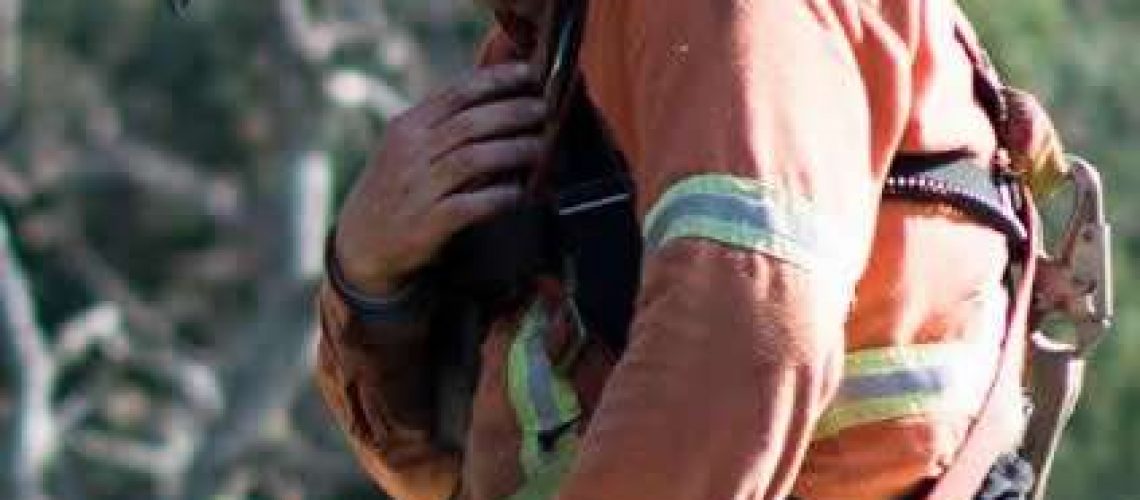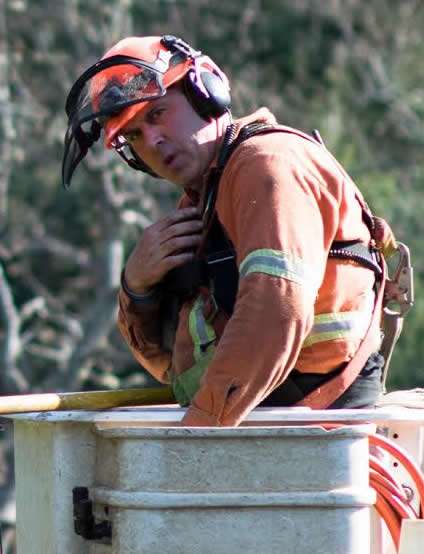
As discussed in my blog post War Zone/Communication, we’ve found radio communications to be invaluable on our work site. Using radios has drastically improved site safety, employee morale and crew efficiency. They’ve somehow managed to make work even more fun (and tree work is pretty great as it is already).
We researched a lot of options before choosing our communication equipment. I investigated Bluetooth-enabled systems, but decided against these for a number of reasons. Cell phone coverage is non-existent in some areas we work. Having an open channel for discussion meant we had to hear everything everybody was saying or doing all the time (ie. standing by a chipper at full idle, broadcasting to everyone on site). Many Bluetooth systems only allowed for a certain number of users/callers. Using cell phones outside in the field just seemed like an expensive, bad idea.
Radio communications is the preferred method of communication used by fallers in BC forests; I’m a big fan of using proven technology, and you can’t get a better test for endurance than a cut block. I approached a few local radio specialists before finding the guys who supplied local fallers with radios, and here is what they set us up with….
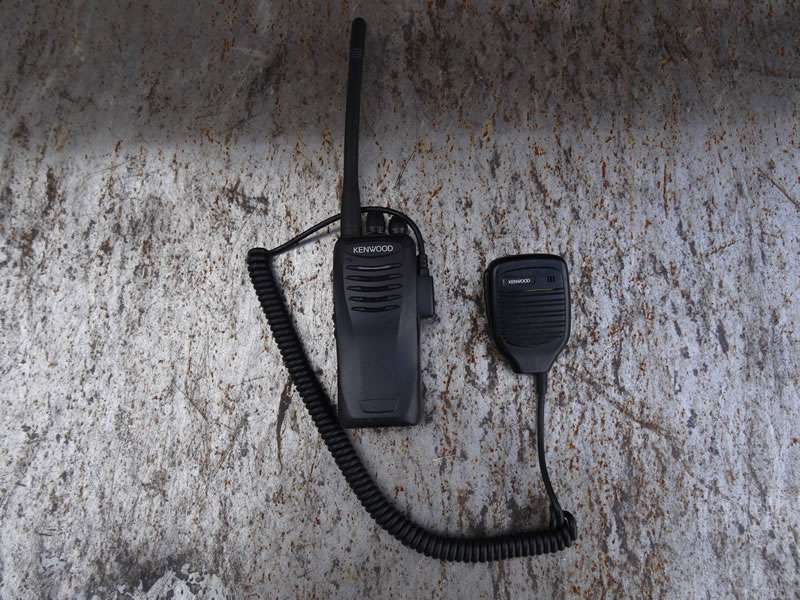
The Kenwood TK-2402 radio is weather-resistant (rain proof, not suited to diving completely under water), durable, easy to operate (no buttons), and has limited work site range (so you’re not broadcasting dirty jokes 5 miles in every direction from the work zone – believe me, no matter how hard you try to resist, dirty jokes love the radio like the Kardashians love being on TV).
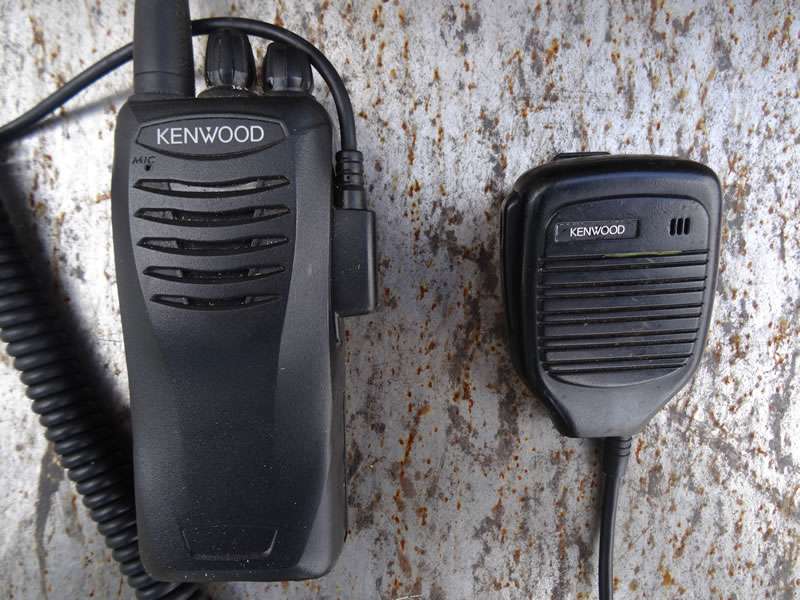
Here’s a close-up of the radio and microphone unit. The microphone is a bit of an Achilles heel of these units; not because they’re weak, but because they are at the highest risk of abuse/accident. We’ve found that if you take care of them by making sure they’re always clipped to something to prevent drops they do seem to last. The key advantage over using a push-to talk-mic over another system is that you aren’t “on” all the time; you push when you want to communicate and then forget about it and go to work.

The secret to a radio unit’s durability and longevity is how well you take care of it. We bought these padded protective radio harnesses to house the radio units. The harness almost completely covers the radio unit, and the backing has foam padding to prevent the radio from jabbing the user while being worn. One rule we follow strictly is to always have your radio mic clipped to the harness. Unclipped mics tend to slip easily out of hands and smack the ground. Our mics have been able to withstand a few hits, but we have had to replace one since purchasing the radio sets (about 8 months ago).
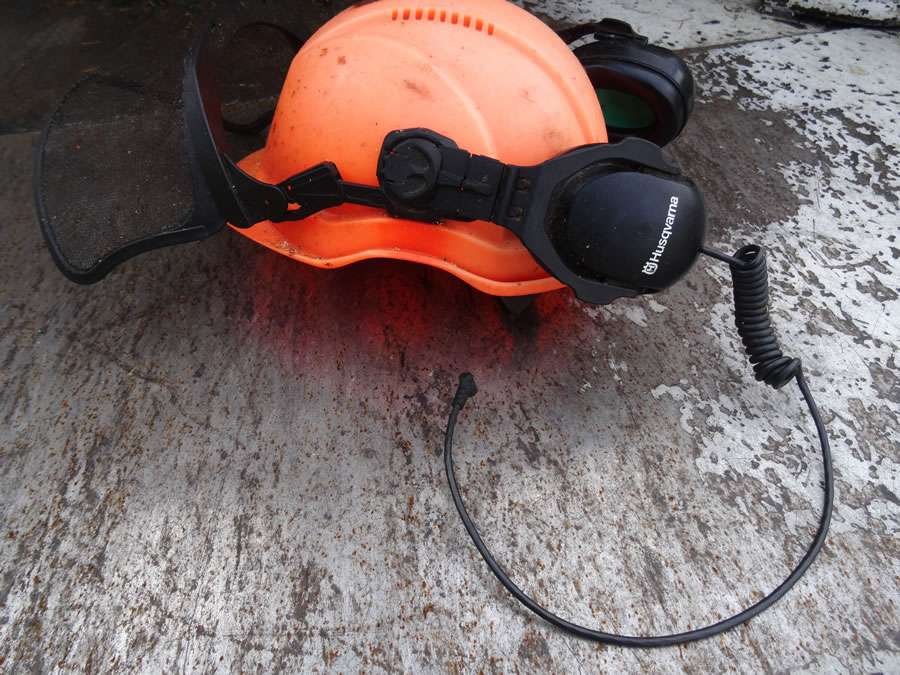
The radio system shines using an integrated ear muff speaker. Workers at height have had no problems communicating with ground workers feeding the chipper at full idle, or using a chainsaws with the throttle pinned. It makes all the difference when you can radio a new worker to put his face screen down while feeding the chipper instead of screaming your face off with no success. One second weak point in the system is the wire connecting the ear muff speaker to the mic. When it was really hot in the summer we left the radios off, they were just too hot. Instead of switching out our speaker muffs for stock we wrapped our connector cords up and kept wearing them. The strain caused by wrapping the cords up above the muffs ended up breaking wire connection on three of our units. In the future we will be replacing the speaker muff with standard stock muffs when we’re working without the radios for any length of time.
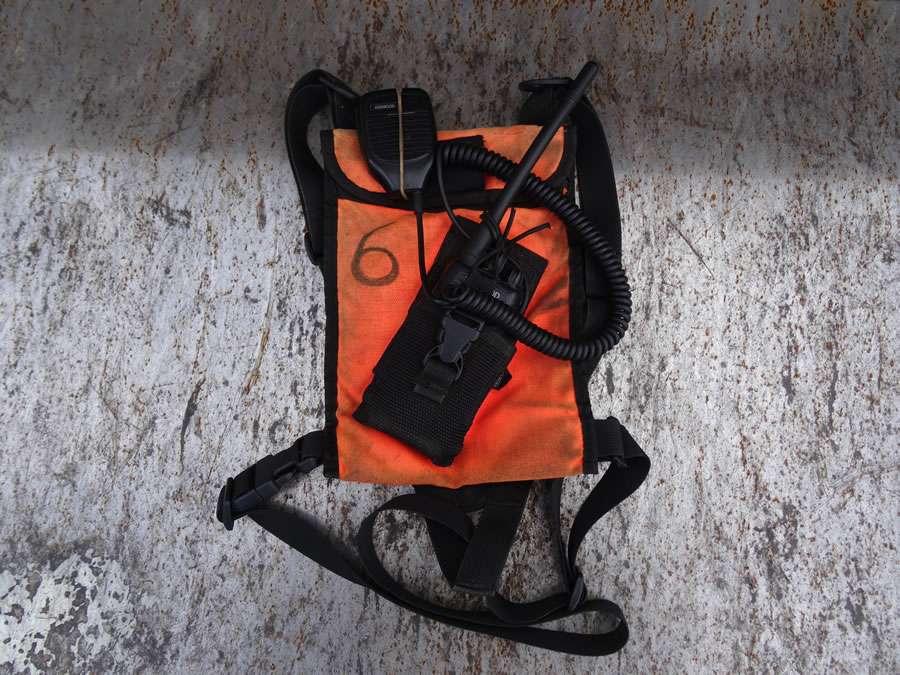
Here’s how we package a radio unit when we’re not using it. Notice the mic clipped to the radio harness. You might also notice the elastic band on the mic. We found that after very little wear time the connector wire from the speaker muff started falling out of the mic unit. When held in place it worked fine, so I went and bought 2lbs of elastic bands from the local dollar store and stored some on each boom truck so everyone had enough spare elastics to last about 14 years. The elastics fixed the problem; they hold the speaker muff connection in place perfectly.

Traditionally, the harnesses are worn on the front of a worker, but that didn’t work for us. Guys dragging brush would be pounding the unit relentlessly. The antennae would also jab up into your face if you looked down. So we spun the harness around and wore it like a small backpack, which basically solved all our problems. Wearing the harness on your back is a bit uncomfortable sitting/travelling in a truck, but the unit can be put on and taken off in less than a minute. And, you don’t really want your guys too comfortable sitting around, do you?
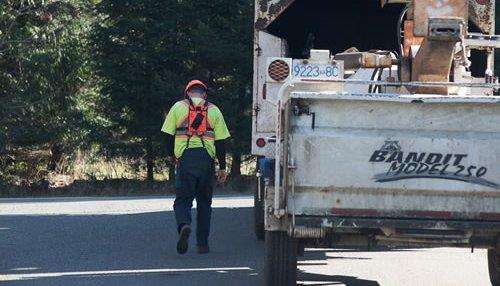
We’ve used the radios on our work site for about 8 months now. We’ve spent about $180 CDN in repairs (one broken mic, three fixed speaker muff connector cords), which I think is pretty good considering the environment we use them in daily. We have yet to replace one of the expensive handheld TK-2402 units. All in all, we’re extremely happy with our investment. As shown, each complete unit cost approximately $700 CDN (not including the Husqvarna hard hat). We would highly recommend these for any tree service company looking to take its safety and productivity to the next level.
Please feel free to e-mail me for more information or to enquire about purchasing at [email protected].

